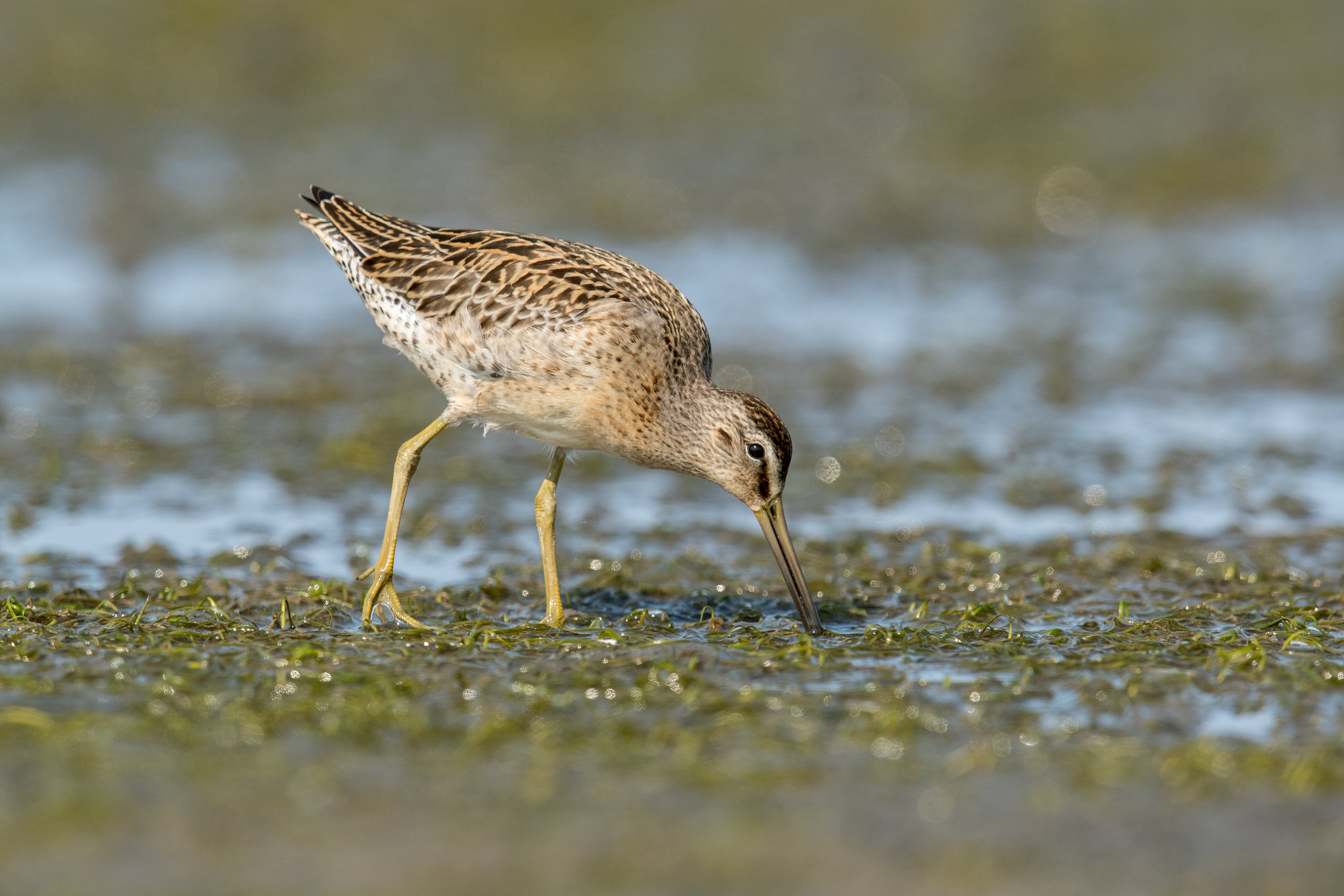Bird of the Month: Long-billed/short-billed Dowitcher
By Hugh Jennings
PC; Mick Thompson (Short-billed Dowitcher)
Scientific Name: Limnodramus scolopaceus/griseus
Length 11.5 in 11 in
Wingspan 19 in 19 in
AOU Band code LBDO SBDO
The Long-billed Dowitcher (LBDO) is about 11-1/2” long while the Short-billed Dowitcher (SBDO) is about 11” long. The wingspan for both is 19”. The genus name Limnodramus (lim-NOD-roh-mus) is Latin from the Greek limnodromos, marsh runner. The Long-billed’s species name scolopaceus (skol-oh-PASS-ee-us) is Latin from the Greek skolopax, a word used by Aristotle for “woodcock” apparently in allusion to the long, pointed bill of the woodcock. The Short-billed’s species name griseus (GRIS-e-us) is Latin for gray, grizzled, the general color in winter plumage. The name Dowitcher (DOW-itch-er) is of Iroquoian Indian origin, a common name for these snipelike shorebirds.
Dowitchers are stocky, long-billed birds with a white upper rump and greenish legs. The Short-billed on average is smaller, slimmer, shorter-legged and shorter billed but there is much overlap. In summer, the LBDO underparts are entirely reddish brown with heavy barring on the breast and flanks, and no white belly. The SBDO has a heavily spotted orange brown neck and breast with white lower belly. Fall juvenile LBDO breasts are mostly gray with little speckling and the back feathers are narrowly edged with dark reddish brown and lack the internal markings of the SBDO.
Fall juvenile SBDO breasts are buffy and speckled with darker marks. The back feathers are broadly edged and internally marked with reddish buff. In winter, they are both gray-brown above and whitish below and are best distinguished by voice.
The LBDO’s flight call is a high-pitched thin “keeek” sometimes repeated in accelerating quick, sharp series. The flock gives a constant chatter while feeding. The SBDO flight call is a lower liquid, rapid tututu. The flock is usually silent.
Both Dowitchers are found in large flocks on mudflats and shallow ponds. The Short-billed favors saltwater beaches and mudflats while the Long-billed is usually found in freshwater pools, but there is a lot of overlap. They feed in mud or shallow water with an up and down probing motion like a sewing machine, with a diet consisting of small aquatic invertebrates, insects, mollusks and marine worms.
Breeding range is mostly in Arctic coastal regions, with the LBDO generally farther north and west than the SBDO. The LBDO’s nest is on the ground, usually near water, often on raised hummock or tussock in wet meadow. The SBDO’s nest is on the ground in bog, forest clearing, or edge of tundra, often near water. Both usually have four eggs, the LBDO’s eggs are brown to olive with marks while the SBDO’s are buff-green with marks. Incubation is 20-21 days. The downy young leave the nest shortly after hatching. The parent roles in caring for the young is not well known, but the female is reported to depart near the time the eggs hatch, leaving the male to care for the young. The young find all their own food, but the development of the young and age at first flight are not well known.


